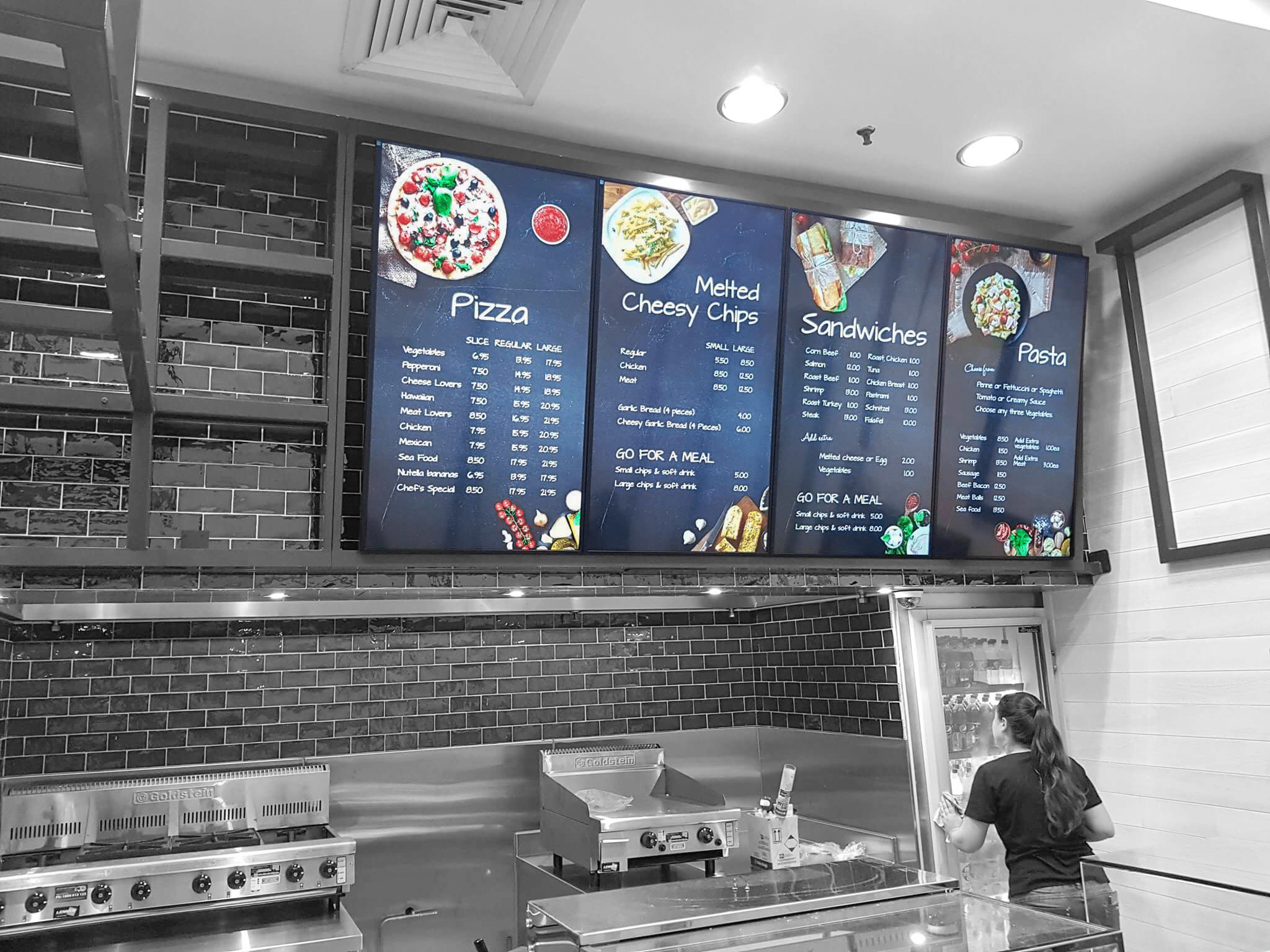
When choosing a digital signage solution, there is often a confusion between the difference of a domestic TV or a commercial display. Although both look very similar, TV’s and commercial screens are very different inside.
Functionality
Residential TV’s may appear more functional as it is a complete system in one product rather than a component of a system like a commercial display. However, TV’s are not designed to be used in prolonged periods as it can suffer from image retention issues and colour fade. Commercial screens are designed for digital signage and use commercial-grade LCD panels for extended use. Moreover, commercial display screens often have inbuilt cooling fans and extra ventilation to allow for 24-hour operation without overheating.
Commercial displays are engineered to withstand high traffic areas such as shopping malls and other public venues. They are built with stronger metal housings rather than plastic housings that most TV has. They are also designed to seamlessly fit multiple screens together to make video walls and easily connect one screen to another.
Features
Although TVs may look a lot like digital signage displays, they are not designed to run in portrait mode. TVs do not allow users to change its orientation from landscape to portrait, a common feature that digital signage screens have. They also have limited abilities in remotely managing the screens. System-on-chip embedded commercial displays also allow the network of screens to connect to a cloud-based content management systems like Signagelive or Brightsign that enables their users to manage their screens and most importantly, monitor and troubleshoot network issues remotely.
Digital signage screens are much brighter than residential TV screens and has a much higher contrast ratio. They also have anti-glare coating for easier viewing at any angle. These features are necessary for digital signage displays that are mounted in areas with varying lighting conditions to attract attention of viewers and customers even from further away. Additionally, digital signage screens have IP5X rating which means they have a protective layer against dust, steam and grease.
Cost
The initial cost of digital signage displays may be more expensive than domestic TVs but the investment will pay for itself in the long run for a number of reasons. Firstly, TV screens may be cheaper but if used commercially, their product life decreases resulting to repair or replacement costs. Maintenance costs for digital signage displays are lesser due to the fact that these screens are engineered specifically for advertising and commercial use. Secondly, TV warranties are instantly voided once it has been used for commercial purposes. 24-hour use are rarely covered in TV warranties and these are most usually the cause of image retention issues and colour fade. Some digital signage displays have a 3-year manufacturer warranty and covers heavy commercial use.
It is important to understand these differences between commercial displays and domestic TVs when choosing a screen for your store.
Would you like to find out more?
To find out more information about digital signage and what system is best suited for your business or to update your old displays, have a chat with one of our friendly team.










